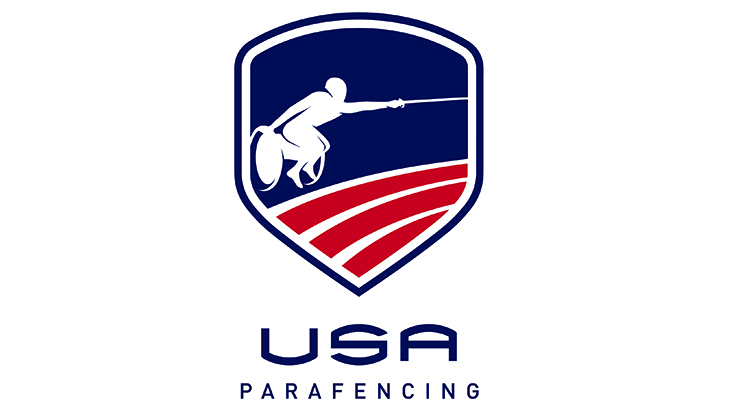From changing its name and logo to adding new events and staff members, USA Parafencing is charging forward with a strategic plan to become an even more inclusive community for its athletes.
Sports Performance Manager Brandon Dyett works for
USA Fencing, which is the overarching NGB that runs USA Parafencing. His role involves management of USA Parafencing, including its rebranding, which was launched in April 2019.
“We went from ‘wheelchair fencing’ to ‘parafencing. The name-change itself was a big deal to our athletes,” Dyett said. “It recognizes more of who we really are.”
Dyett believes the name better explains the sport to newcomers. “If they haven’t seen it, a lot of people think it’s ‘rolling jousting.’ They think it’s two athletes going full speed in a wheelchair and sticking their swords out. It’s really a game of chess inside a 20-square-foot area.”
Dyett himself used to be one of those newcomers. After eight years of working for various USOC organizations—USA Boxing,
Weightlifting and
Volleyball—the self-proclaimed sports geek saw an opening at USA Fencing as an opportunity to learn a whole new sport.
He says fencing was the most difficult sport to understand, because it has three sports within it—using different weapons called the foil, epee and saber— and a separate set of rules for the parafencing side.
Dyett’s role with USA Parafencing includes both developing the athletes and growing the sport through grassroots efforts. According to Dyett, many of USA Parafencing’s athletes were once able-bodied athletes who suffered an accident and found out about the sport through a local club. Only a few had previous fencing experience.
Growing Fencing
Dyett compares parafencing to winter sports, like bobsledding, in that both sports do a lot of recruiting and camps to find athletes because they aren’t necessarily common sports that are on people’s radars.
“We’re very much a national organization, but we run 100% off of the local clubs,” Dyett said. “If we don’t have their investment, then all of our efforts fall flat. I’m only one man, in one office, in Colorado Springs. We have athletes all over the country, and we want to continue to spread that throughout the country.”
USA Fencing doesn’t break down its membership numbers based on parafencers and able-bodied fencers, but Dyett estimates the organization has 15 to 25 athletes who compete in its three domestic parafencing competitions a year, and close to 12 athletes who compete internationally at five competitions a year.
One way that USA Parafencing is demonstrating its inclusivity and its partnership with USA Fencing is through its new logo, which incorporates the main components of the USA Fencing logo.
Dyett and the USA Parafencing team are taking that partnership a step further, by developing new events in the program where able-bodied fencers can compete with the parafencers. Dyett estimates the program will be ready by the season’s start in October 2019 or soon after the 2020 Olympic Games.
“We’re trying to show its inclusiveness,” Dyett says. “To have an event where the able-bodied and the adaptive athletes compete with each other will be really exciting for us.”
USA Parafencing has also just hired two new staff members, including a national team coach and a team member who will focus on adaptive strength and conditioning.
“We plan on being a growing sport and a competitive sport going forward,” Dyett says. “We just want to spread the word and spread the joy and spread the community of parafencing.”


